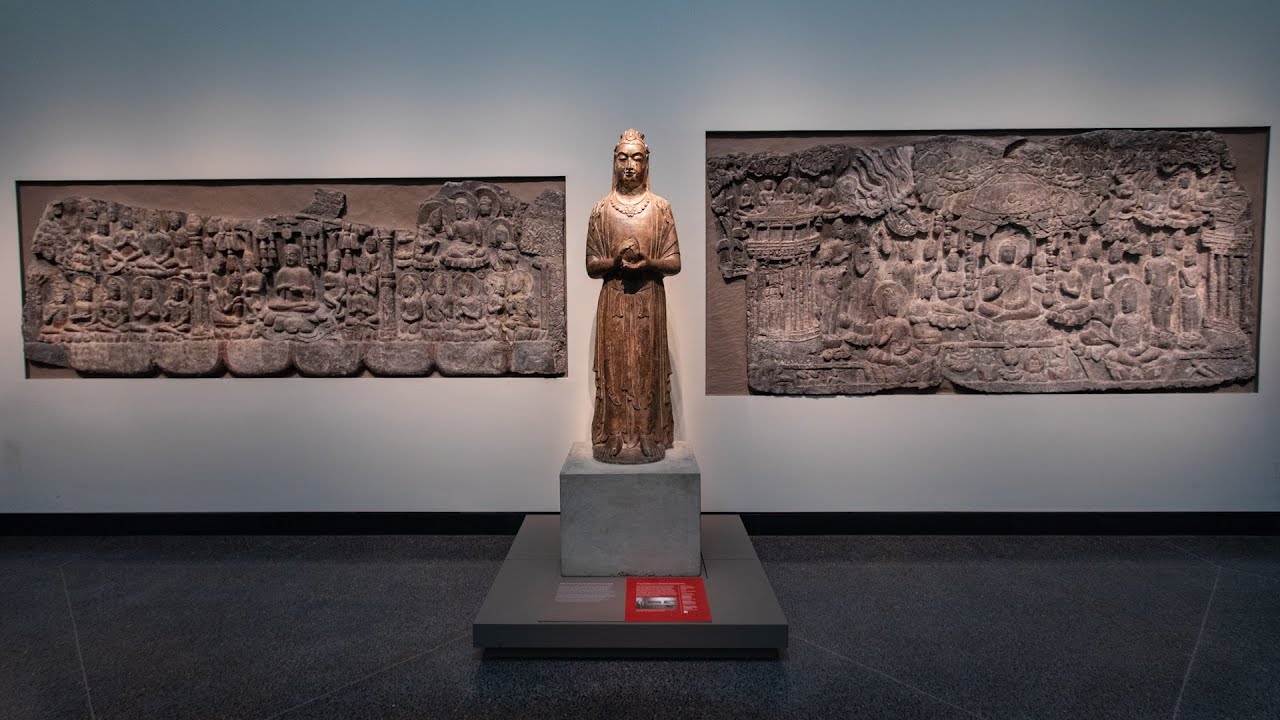Tea and Conversation: A Vision of Paradise—From a Buddhist Cave Temple to the Museum
Recorded on December 9, 2020
How can objects reveal histories of faith, ritual, 政治, and commerce? In this conversation, virtually step inside the Freer Gallery of Art to explore two monumental artworks that have been on display since the museum first opened its doors. The stone murals were created over 1,500 years ago for a Chinese Buddhist cave temple complex called the “Mountain of Echoing Halls” (Xiangtangshan). The murals were removed from their original home in the early twentieth century during a period of political upheaval and were installed in the walls of the Freer Gallery in 1922 while the building was under construction. The murals show images of Buddhas and compassionate beings—or Bodhisattvas—and include an image of a paradise known as the Pure Land, where devotees believe their souls will be reborn in the afterlife. What makes these artworks important, how did they come to the museum, and what do they have to teach us about the formation of museum collections? Join curator Keith Wilson and provenance researcher Joanna Gohmann to explore the murals up close, trace their journey over time, and unravel their aesthetic and spiritual meanings.













